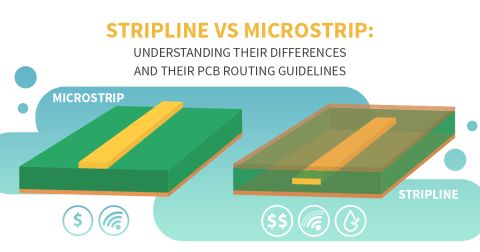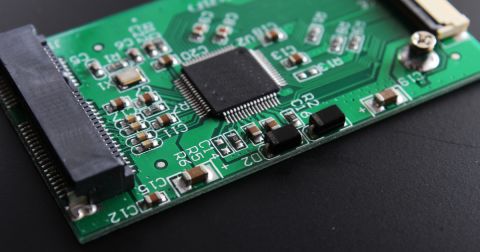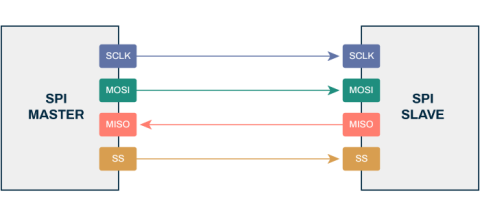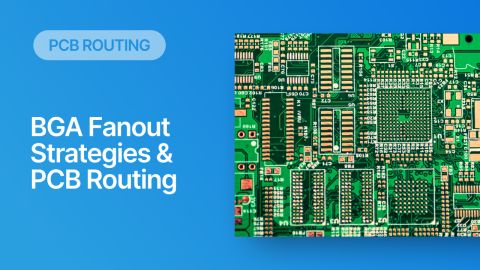Why Altium Designer Can Help Design PCBs Intuitively and Intelligently

As the complexity of printed circuit boards (PCBs) continues to rise, the demand for cutting-edge tools becomes more critical. Altium Designer merges intuitive design with intelligent functionality to offer a leading solution, focusing on key features like:
-
A cohesive unified design environment and data model;
-
Comprehensive integrated analysis tools;
-
Capabilities for 3D Molded Interconnect Device (MID) design.
A Unified Design Environment and Data Model

Altium Designer’s unified design environment and data model marks a substantial leap forward in PCB design technology by moving away from the piecemeal and isolated methods that traditionally dominated the field. Embracing a unified electronics design approach streamlines the entire process from conceptualization to production, marking a significant shift toward more efficient PCB design and electronics manufacturing with less room for error.
Breaking Down Fragmentation in PCB Design
Traditionally, PCB design involves navigating through various standalone software tools at each design stage, leaving room for significant challenges. When each tool operates with its own distinct data model, it requires frequent data transfers—from schematic design to PCB layout, all the way to routing. A fragmented approach prolongs design cycles and increases the risk of errors, including inconsistencies and potential loss of vital design details during data translation. As a result, designers face repetitive modification cycles (E.g., Engineering Change Orders), which leads to escalating costs, project delays, and prolonged market entry times.
The Power of All-in-One Design System
Altium Designer addresses electronics engineering hurdles head-on by offering a cohesive platform that encompasses all elements of PCB design. Every part of the process—i.e., initial schematics, layout, routing, 3D component modeling, and multi-board assembly management—is unified under the same system. This removes the need to import and export data between different tools, because all operations are conducted within a single, coherent ecosystem. Integrating ensures that changes made during any stage of the project are immediately propagated throughout all stages to minimize the likelihood of errors and discrepancies.
An Optimal Approach for Error-free Designs
A unified engineering approach enhances productivity by enabling seamless progression from initial schematics to PCB layout, routing, board analysis, multi-board connections, MCAD integration, and production—all within one workspace. This accelerates the design timeline and eliminates the need to switch between different software interfaces.
An integrated data model is key to ensuring consistency and accuracy throughout the design process. Establishing a single source of truth to house your design data reduces the risk of discrepancies—an aspect that is particularly vital for complex designs requiring precise integration of electronic and mechanical components. A unified approach ensures perfect alignment in component form, fit, and function while instilling confidence in designers with reliable, up-to-date data.
Integrated Analysis Capabilities

Altium Designer’s integrated analysis capabilities mark a progressive step in PCB design by embedding advanced analytical tools directly into the design workflow. This integration addresses the intricate challenges of modern PCBs, where achieving optimal performance, reliability, and adherence to industry standards is imperative.
Detect Design Issues Early for Faster Resolution
Altium Designer offers a wide range of analysis tools, like signal integrity analysis for ensuring optimal high-speed transmission by detecting and mitigating signal degradation or bounce-back issues.
Similarly, the analysis of the Power Distribution Network (PDN) is indispensable for helping ensure that electrical power is distributed uniformly and effectively throughout the circuit, thereby reducing problems such as voltage drops and overheating.
Thermal simulation also plays a pivotal role in mitigating risk of design issues by offering heat generation and dissipation insights within the PCB. This is especially important to prevent component overheating that could diminish longevity or cause component failure. These tools collectively form a solid foundation for creating PCB designs that are not only operational, but also optimized for durability and performance.
Collect Immediate Insights to Make Immediate Adjustments
Altium Designer's analysis tools provide instant feedback throughout the design phase, giving designers the ability to spot and rectify potential design flaws before they become embedded, helping to alleviate extensive and costly modifications later. Should the analysis of signal integrity highlight issues like crosstalk or signal reflections, for example, adjustments to the routing or component layout can be made in real time to avoid retrospective changes.
Conducting on-the-spot analysis and adjustments for signal, power integrity, and thermal management within the same environment significantly smooths the design workflow. Designers no longer need to rely on additional analysis software or data migration to other platforms, saving valuable time and minimizing the chance of errors in data handling.
Meet & Exceed Evolving PCB Design Standards
Perhaps the most notable advantage of integrating analysis in Altium Designer lies in the substantial improvement it brings to the PCB’s quality and dependability. Early identification and rectification of design issues mean the final product adheres to—and even can surpass—the required design, performance, and reliability standards. Adopting this preemptive approach aligns with the industry's best practices of addressing issues before they escalate.
Having integrated analysis tools at their disposal gives designers a more nuanced comprehension of how designs perform under different scenarios. This knowledge allows them to make informed decisions that enhance the design, whether it's improving thermal efficiency, modifying the PDN to prevent voltage drops, or tweaking signal paths to reduce interference—all within a unified design framework.
3D-MID Design Methodology

3D-MID technology revolutionizes how electronic circuits are integrated, enabling their application directly onto plastic substrates that take on various three-dimensional forms. This progression from traditional, flat PCBs ushers in a new era of possibilities for designing electronic products. Altium Designer therefore equips designers with capabilities to craft and view PCBs in a fully three-dimensional context. This is perfect for contemporary electronics—which often need to be accommodated into uniquely shaped and space-constrained environments—ranging from wearable devices to sophisticated medical equipment.
Craft Intricate, Space-efficient PCB Designs
Altium Designer's adoption of 3D-MID technology fosters a previously unattainable level of cohesion between electronic and mechanical components. This allows designers to engineer circuitry that seamlessly fits and adapts to three-dimensional forms, leading to products that are more compact and exhibit a profound integration of electronic and mechanical elements. This deep-seated integration guarantees the efficient use of every available millimeter, a vital consideration for devices where space is top-of-mind.
Reshape Design Thinking Beyond 2D Limits
The introduction of 3D-MID capabilities within Altium Designer significantly streamlines the design process. Designers are no longer constrained by the limitations of envisioning how two-dimensional PCB layouts will transition into the three-dimensional world. Now, they have the power to sculpt and tweak their designs in three-dimensions to understand how these will integrate within the actual mechanical enclosures. Such direct visual feedback supports more strategic decisions regarding component positioning, routing, and the overall board configuration to ensure the best use of space and mechanical compatibility.
Visualize. Refine. Optimize.
Altium Designer’s 3D-MID technology simplifies the PCB design workflow by allowing designers to transition from flat, two-dimensional concepts to fully realized three-dimensional models. In a 3D environment, designers can more precisely model and adjust their PCBs for a clear view of how the designs will integrate with physical casings and enclosures. Immediate visual feedback aids optimal choices in component placement, connection routing, and overall board arrangement, maximizing spatial efficiency and ensuring mechanical compatibility.
3D-MID also supports more strategic design decisions by enabling a concurrent focus on the electrical and mechanical facets of a project. Now, designers can proactively identify and resolve conflicts between electronic components and mechanical structures in real-time, minimizing the need for costly revisions and streamlining production to save time and resources.
The Altium Designer Advantage
Altium Designer is setting the standard in PCB design by merging a cohesive design environment with cutting-edge analytical tools and 3D Molded Interconnect Device (MID) support. This dynamic approach equips electronics design teams with an intuitive platform that streamlines workflows and provides instantaneous analysis. By eliminating the need for disparate tools, Altium Designer minimizes errors, accelerates development cycles, and fosters innovation. The built-in analysis functionality ensures optimization, surpassing benchmarks in performance, reliability, and regulatory compliance.
In addition, Altium Designer's groundbreaking support for 3D-MID design aligns seamlessly with the industry's demand for sleek, integrated electronic solutions. Simplifying the design process and facilitating the creation of sophisticated products, Altium Designer is redefining industry norms. With unparalleled design, analytical, and visualization capabilities, Altium Designer not only enhances efficiency in the development pathway but also elevates the caliber and dependability of electronic products. It empowers designers to lead the way in technological innovation, marking the beginning of a new era in electronics design.










